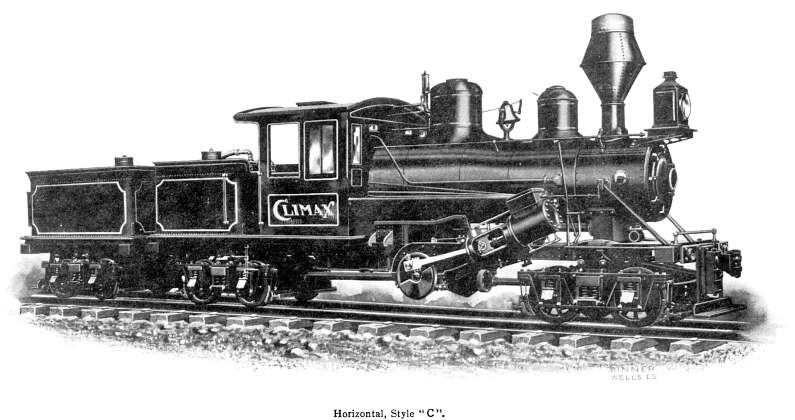These locomotives had perfectly good reasons for their apparently eccentric design.
Steel rails cost money. But in lumber camps there is one thing you have plenty of- trees. The practice was therefore to lay down treetrunks as "rails". Obviously conventional railway wheels would just fall off the treetrunks, so big concave wheels were used, rather like car wheels with no tyres on. These gave very little grip, so the only way to get some tractive effort was to make sure that all the wheels were driven.
Unlike the Shay locomotive, the Climax had its cylinders in the usual place, driving a cross-shaft that was beared to central drive-shafts. It looks a neater arrangement than the Shay, but did it work any better? I don't know.

Above: A Climax three-bogie locomotive.

Above: A 20-ton Climax twin-bogie at work on R E Woods tramway in West Virginia, which had 15% grades and 40-degree curves.
Note the concave wheels on wooden rails. Date of photo unknown.













